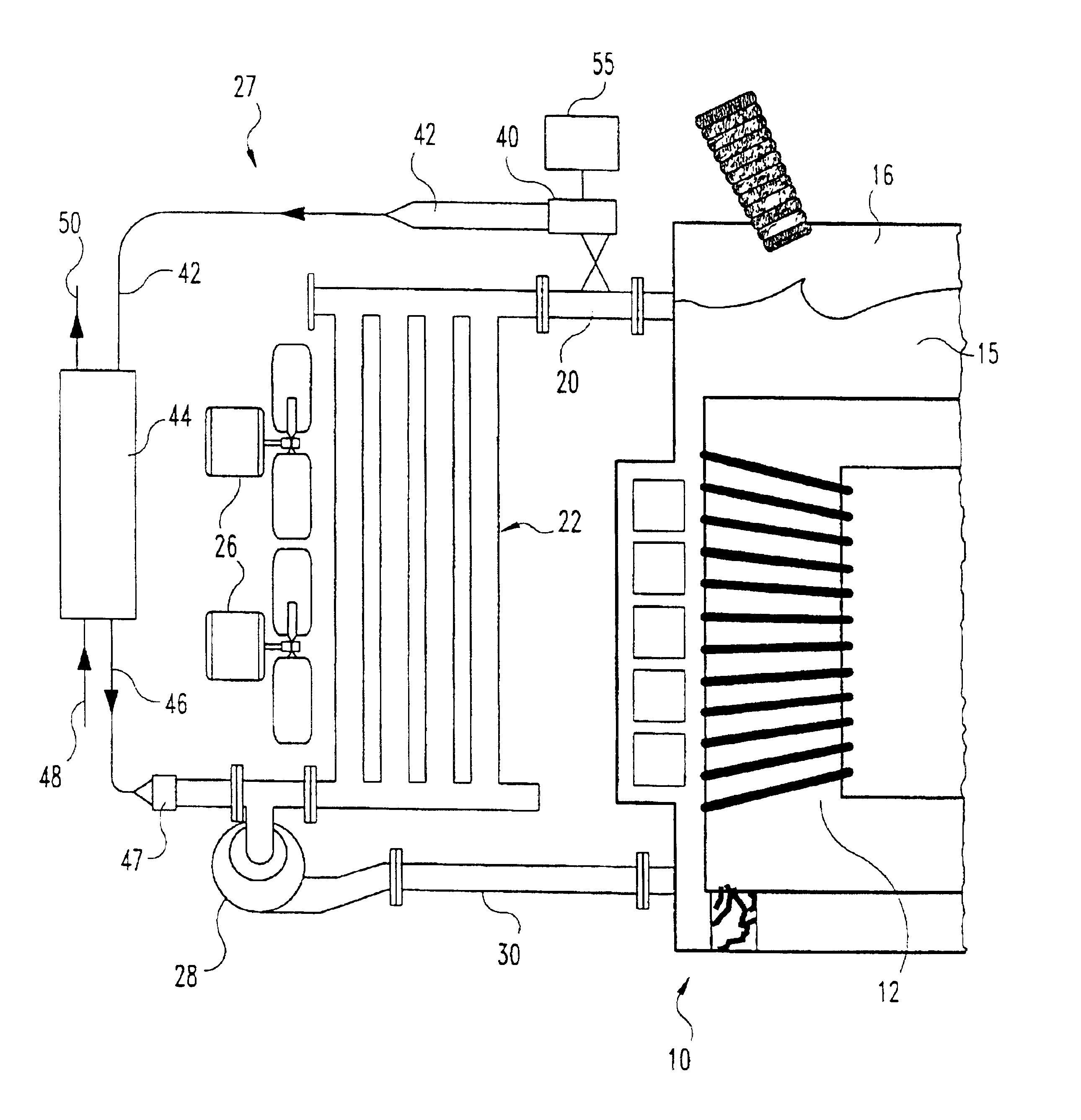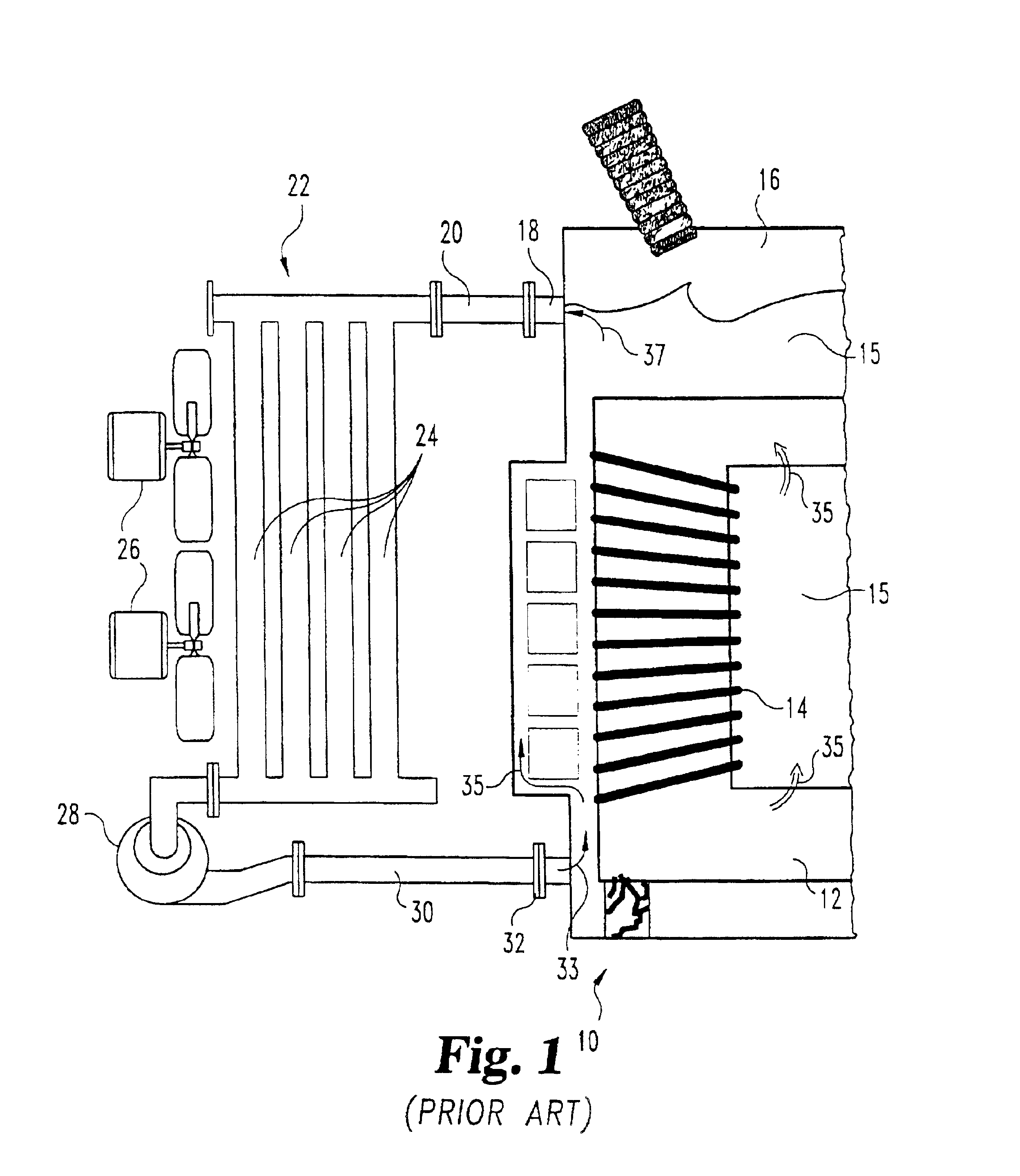Apparatus and method for cooling power transformers
a transformer and apparatus technology, applied in the field of transformers, can solve the problems of reducing the efficiency of the transformer, reducing the useful life of the transformer, and high cost to the industry, and achieve the effects of reducing the cost of operation, maximizing the electrical capacity of the transformer, and effective cooling
- Summary
- Abstract
- Description
- Claims
- Application Information
AI Technical Summary
Benefits of technology
Problems solved by technology
Method used
Image
Examples
Embodiment Construction
[0029]For the purposes of promoting an understanding of the principles of the invention, reference will now be made to the embodiments illustrated in the drawings and specific language will be used to describe the same. It will nevertheless be understood that no limitation of the scope of the invention is thereby intended. The invention includes any alterations and further modifications in the illustrated devices and described methods and further applications of the principles of the invention which would normally occur to one skilled in the art to which the invention relates. For example, while the illustrated embodiment is a retrofit to an existing system, the inventive cooling system can be incorporated into the design specifications for a newly constructed power transformer array.
[0030]Referring now to FIG. 2, there is diagrammatically shown selected portions of one embodiment of a transformer cooling system 27 of the present invention. In this embodiment, the transformer and co...
PUM
| Property | Measurement | Unit |
|---|---|---|
| Temperature | aaaaa | aaaaa |
| Energy | aaaaa | aaaaa |
| Heat | aaaaa | aaaaa |
Abstract
Description
Claims
Application Information
 Login to View More
Login to View More - R&D
- Intellectual Property
- Life Sciences
- Materials
- Tech Scout
- Unparalleled Data Quality
- Higher Quality Content
- 60% Fewer Hallucinations
Browse by: Latest US Patents, China's latest patents, Technical Efficacy Thesaurus, Application Domain, Technology Topic, Popular Technical Reports.
© 2025 PatSnap. All rights reserved.Legal|Privacy policy|Modern Slavery Act Transparency Statement|Sitemap|About US| Contact US: help@patsnap.com



